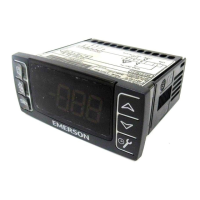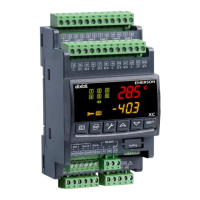User Manual Chapter 7
GFK-1742F Jan 2020
Programmed Motion 196
Example 4: Hanging the Move When the Distance Runs Out
A serious programming error involves “hanging” (i.e. leaving no desirable options for the
command generator) the move at a high velocity when the distance runs out. In the
following example, the first CMOVE accelerates to a high velocity. The second CMOVE has
an identical velocity. However, the distance specified for the second CMOVE is very short.
Thus, the axis is running at a very high velocity and must stop in a short distance. If the
programmed acceleration is not large enough, the following profile could occur. The
DSM314 attempts to avoid overshooting the final position by commanding a zero velocity.
This rapid velocity change is undesirable and can cause machine damage.
Figure 76: Hanging the DSM314 When the Distance Runs Out
DWELL Command
A DWELL command is used to generate no motion for a specified number of milliseconds.
The DWELL command may use a value stored in a designated parameter.
A DWELL after a CMOVE will make the CMOVE stop before the next move, unless the
specified dwell duration is zero milliseconds. A DWELL is treated as a “null” command and
skipped (CMOVE continues to the next Move following the DWELL) if the DWELL command
has a value of zero, or references a parameter register that has a value of zero.
A single DWELL command only applies to one axis. Therefore, in a multi-axis program, you
must designate an axis number with each DWELL command. For example: DWELL AXIS1
2000. If you wish to pause both axes in a multi-axis program, you must use a DWELL
command for each axis.
Example 5: DWELL
A simple motion profile, which moves to a specific point, waits, and returns to the original
point is shown below.
Figure 77: Dwell Command Example

